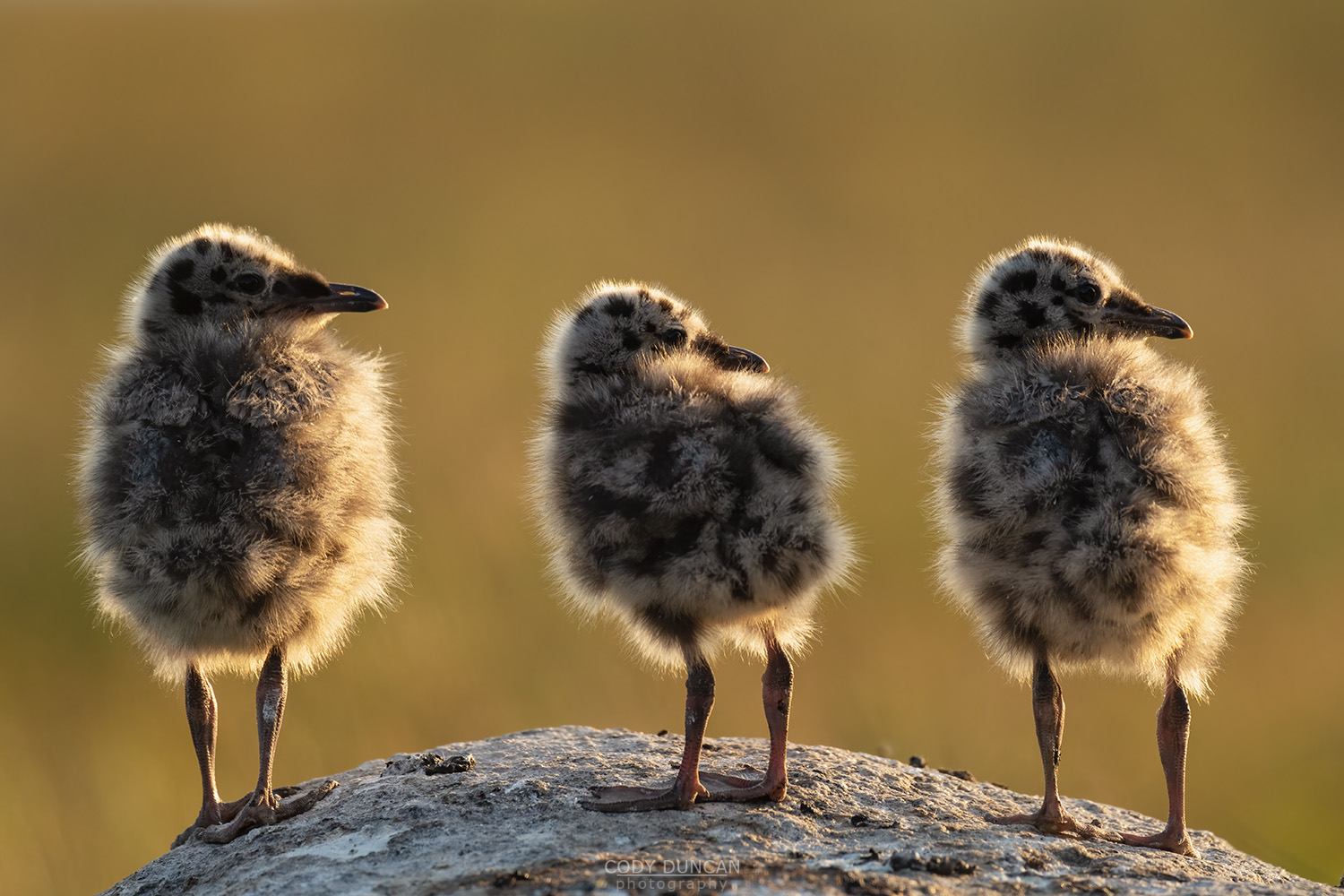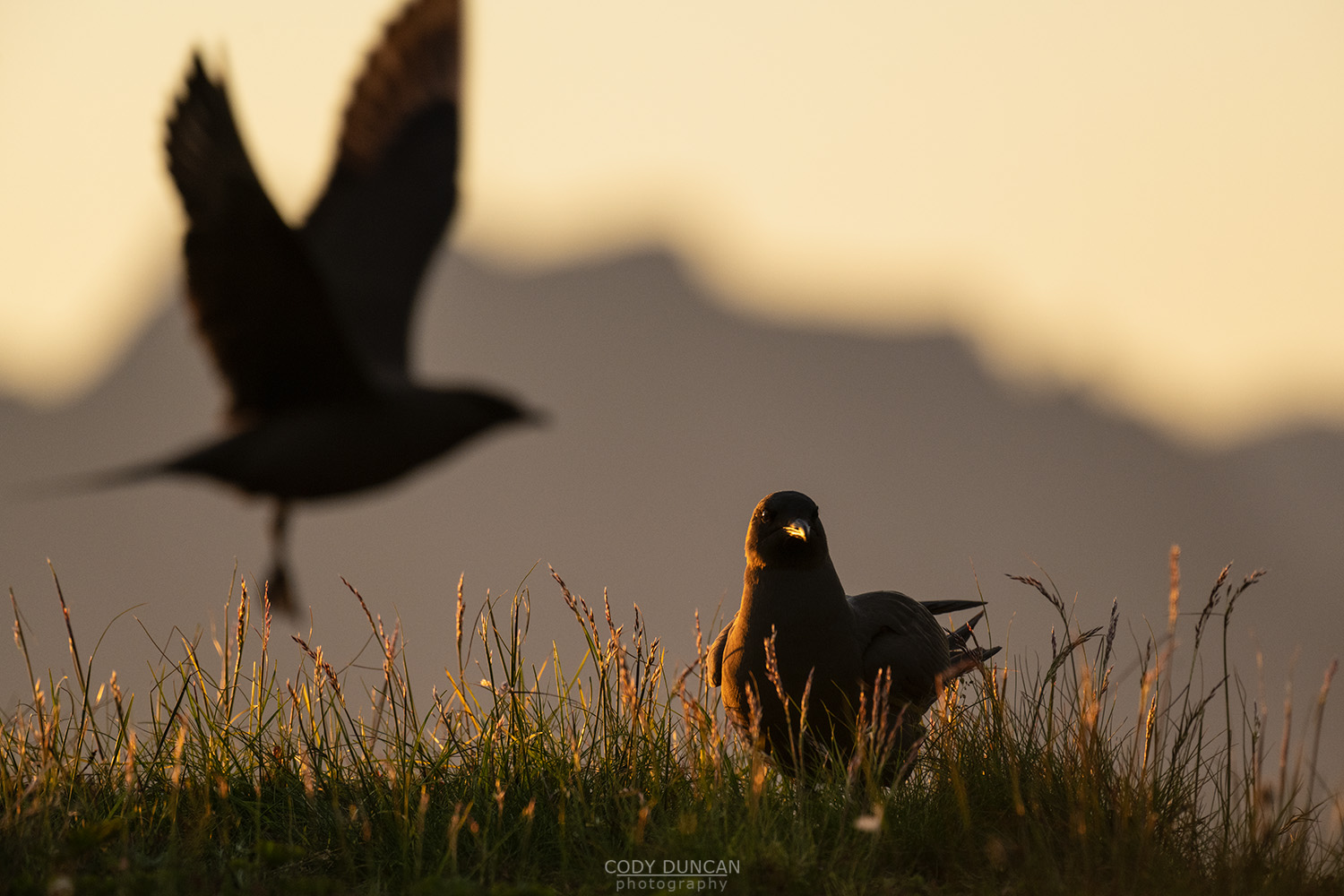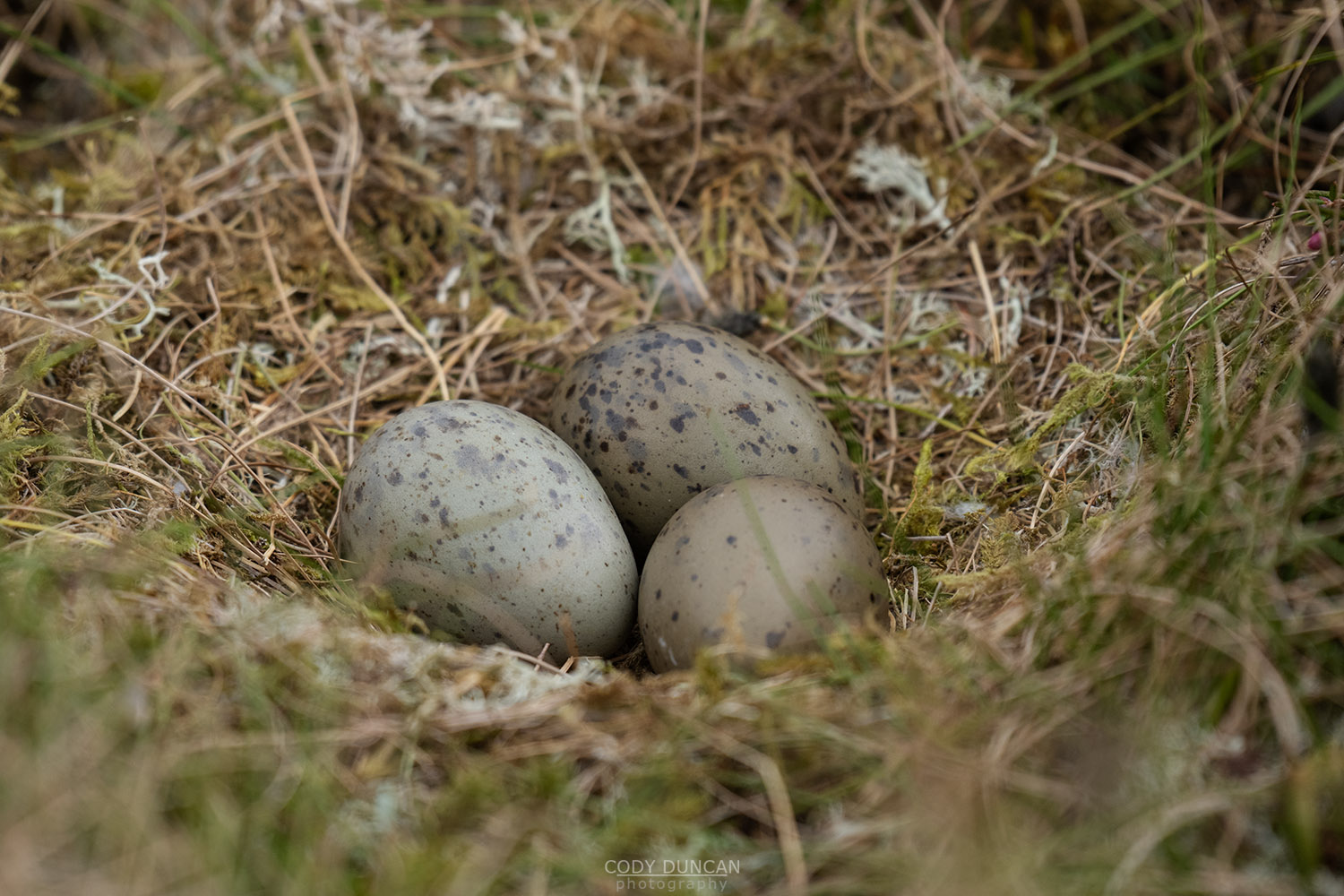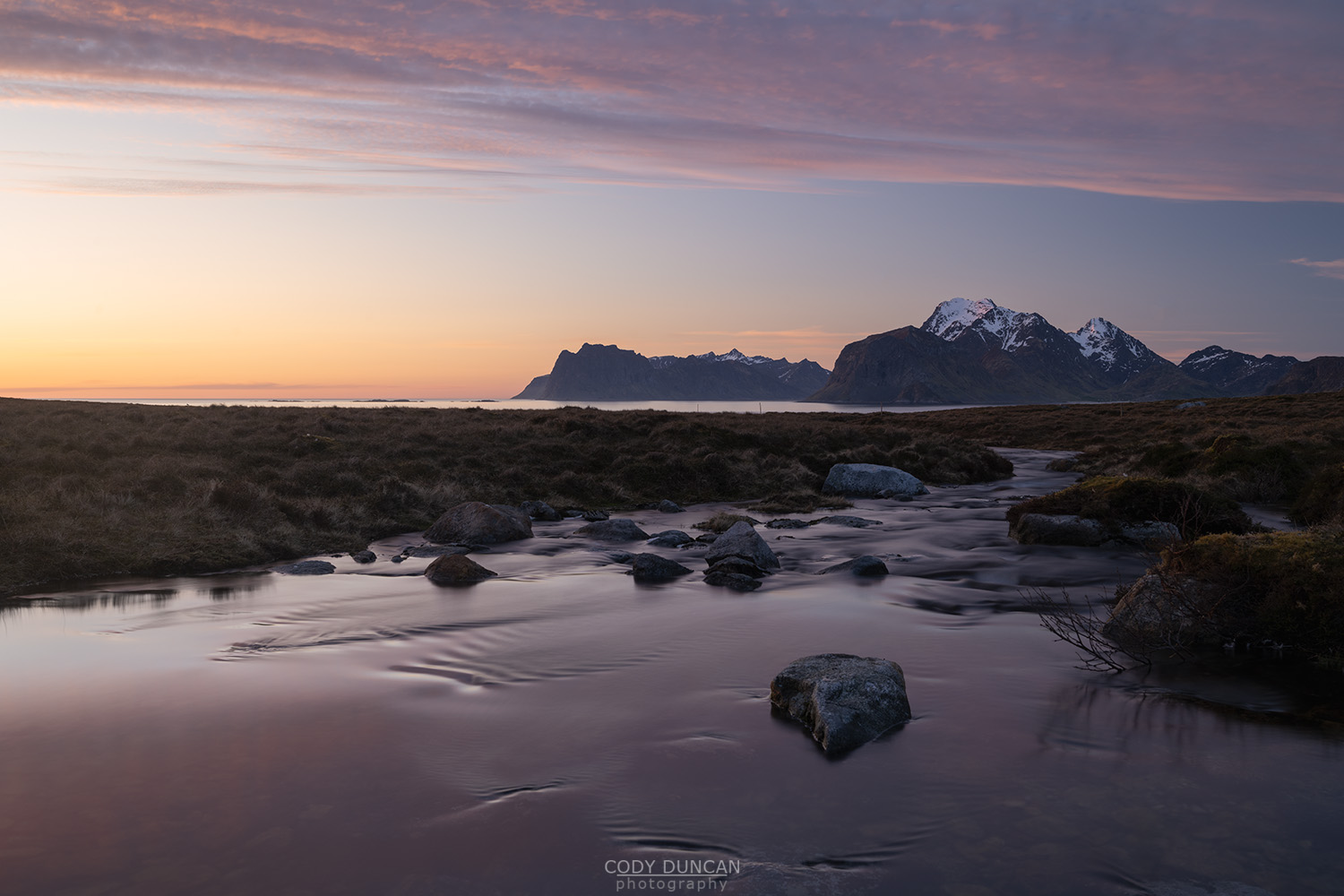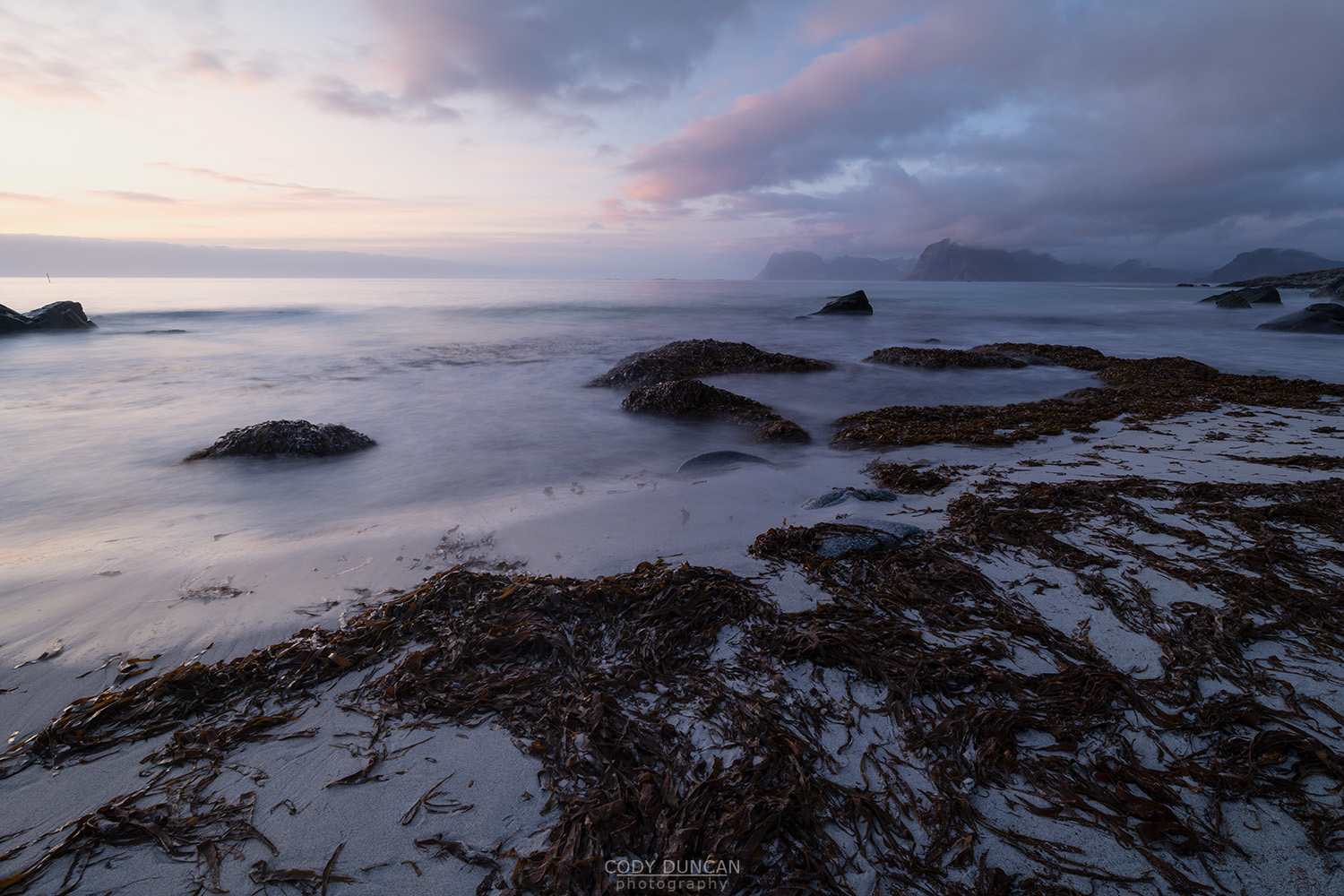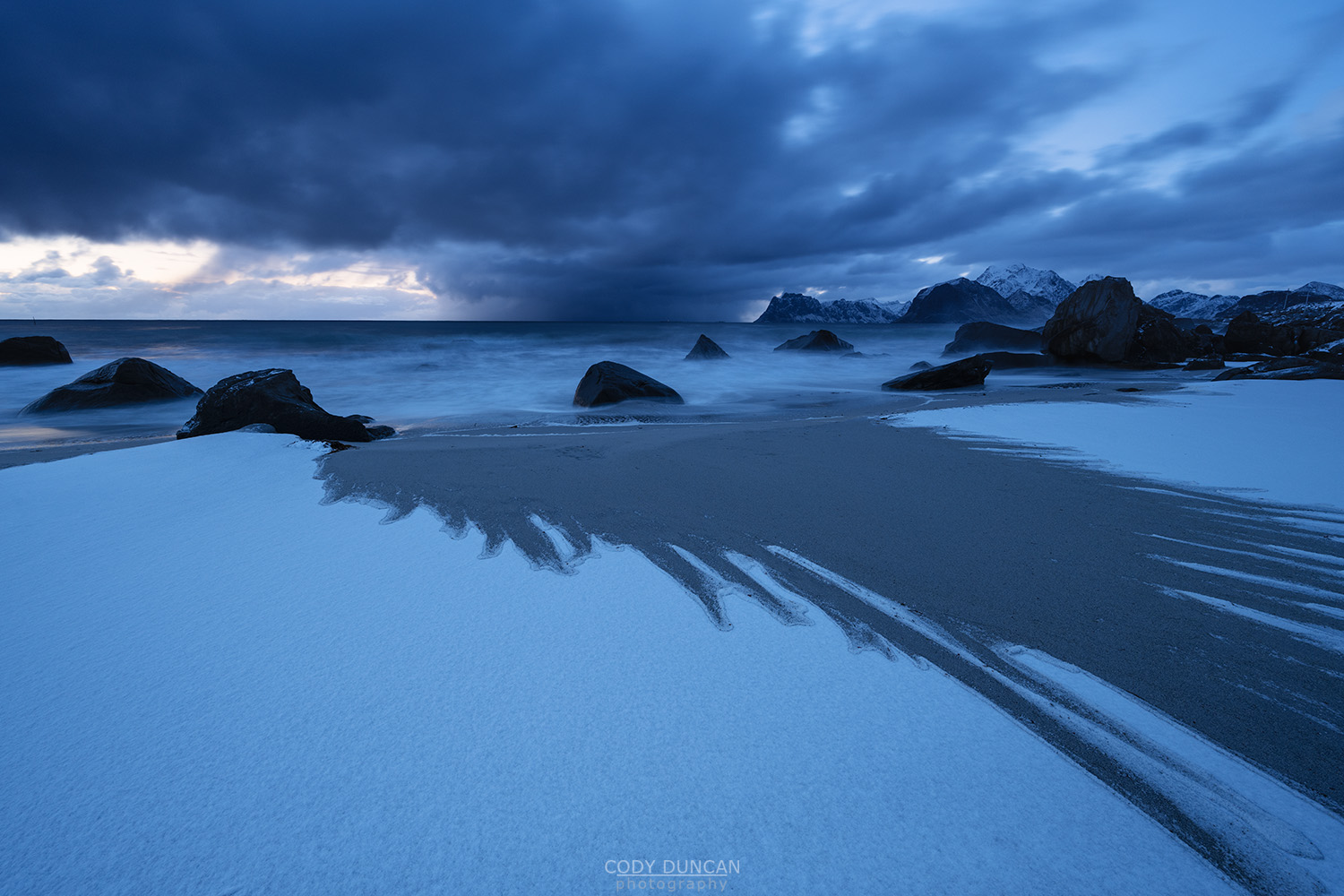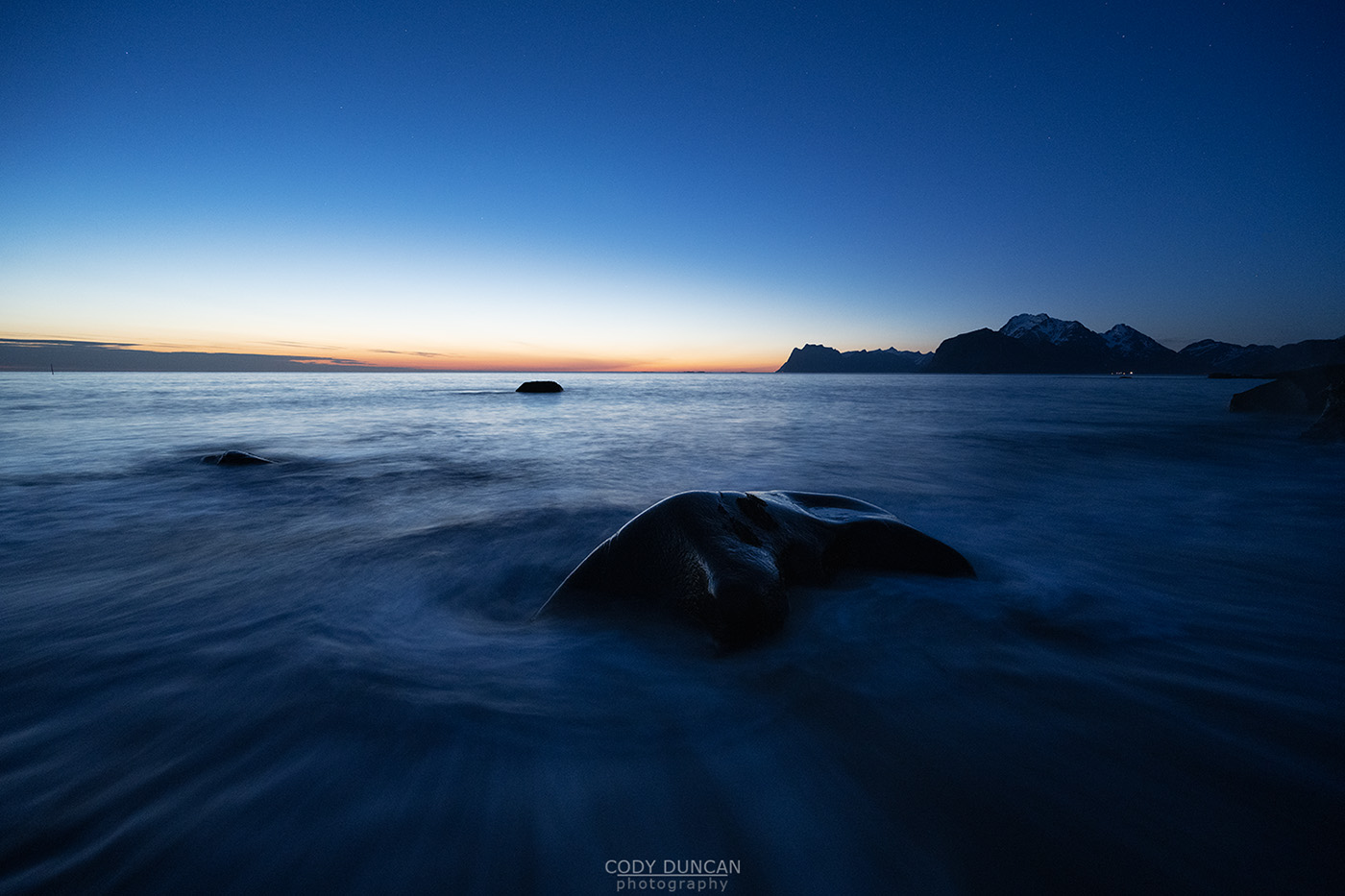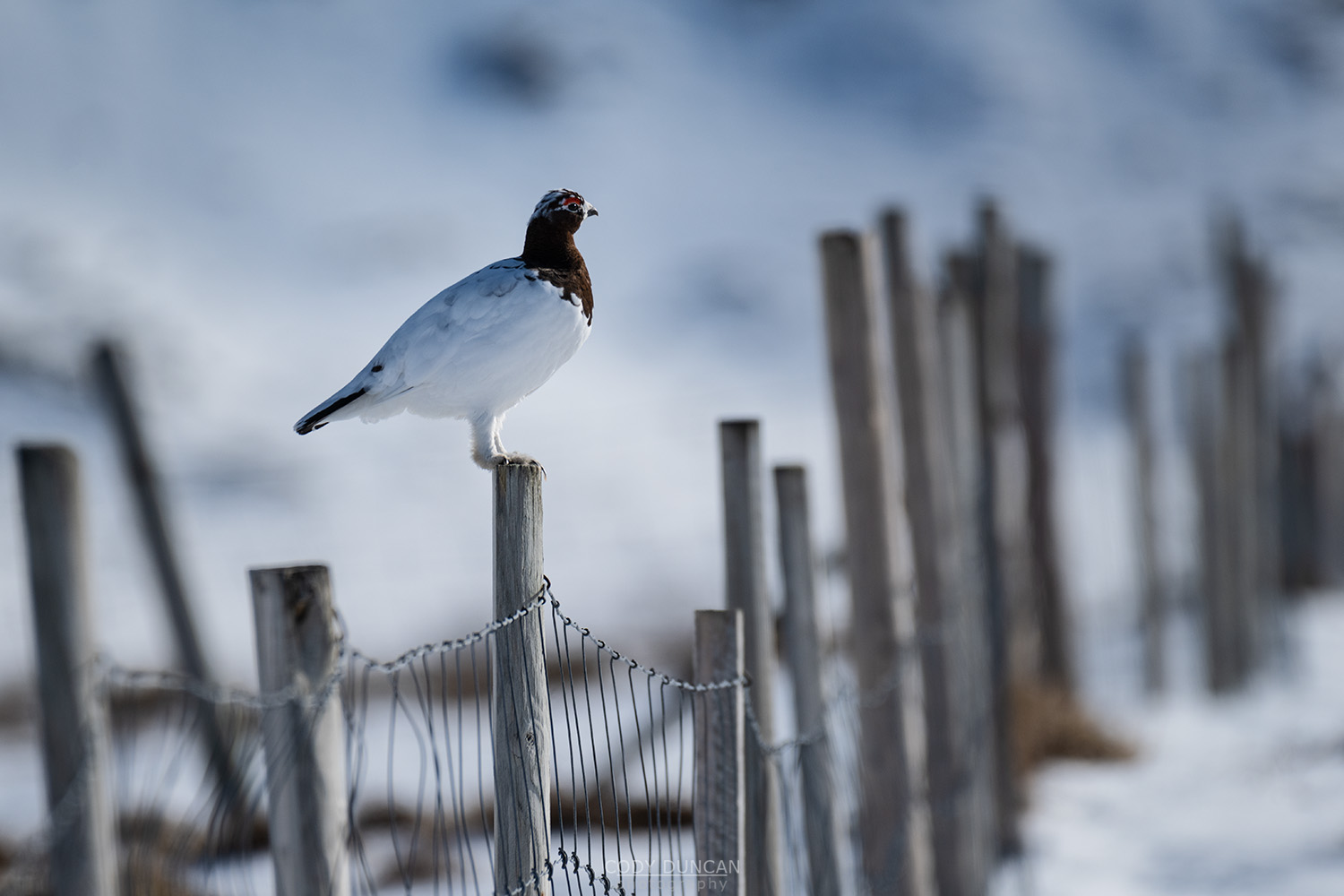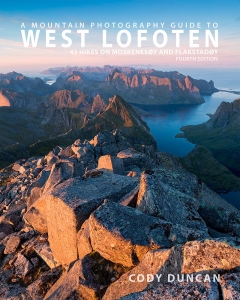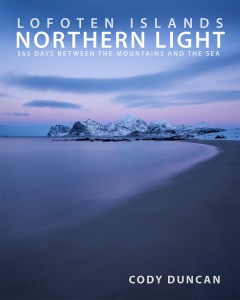Friday Photo #496 – Summer Rain
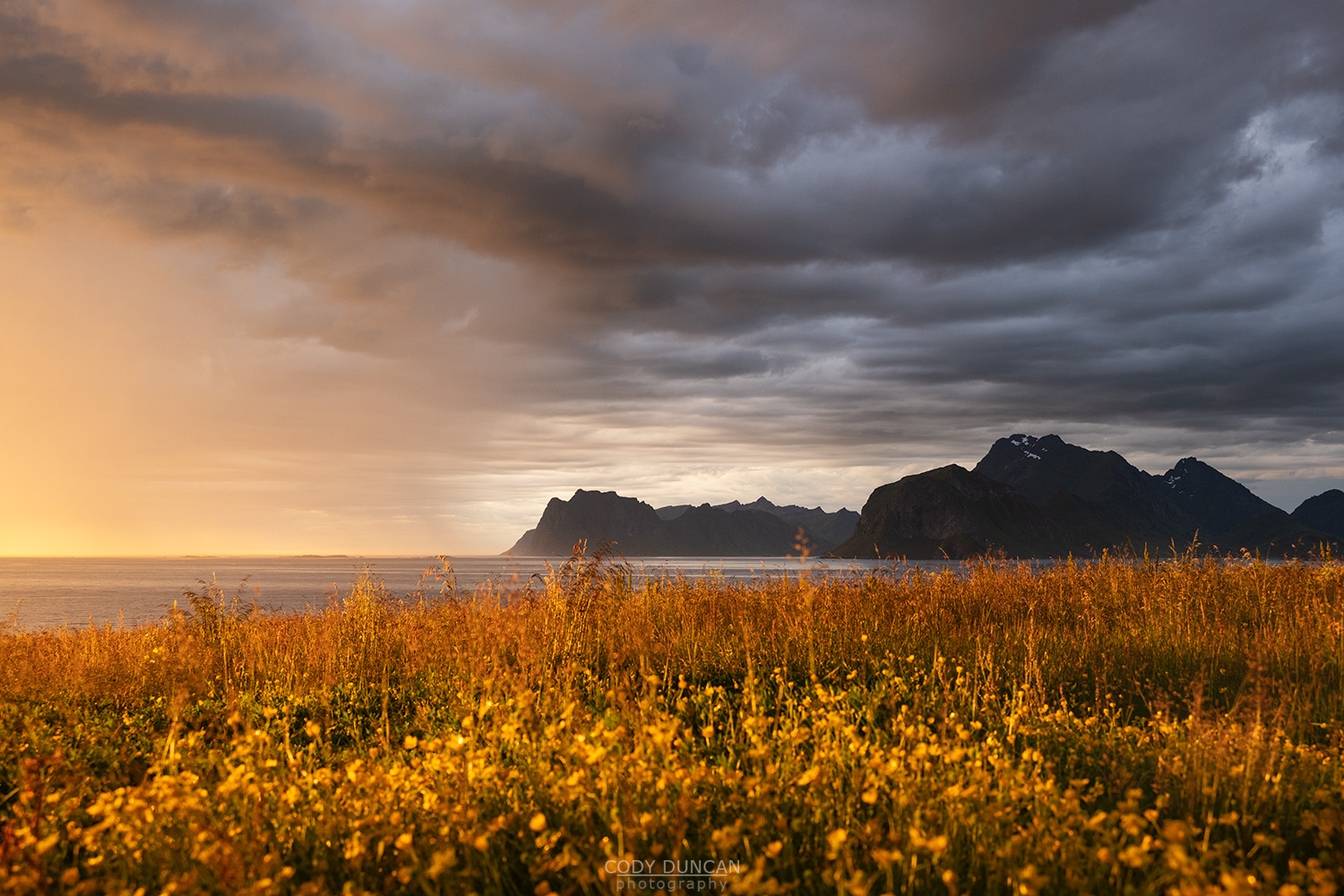
Photo: Midnight summer rain over mountains of Vestvågøy, Lofoten Islands, Norway. July 4, 2022. 00:07
So far this summer it has been one of those years with either completely clear weather or completely grey weather. And while sunset doesn’t occur during the midnight sun season from late May to mid July, so nice color can occur with the right cloud conditions. But often this year, even in the late night hours, the light has just been a bit, ‘ehhh…’ With the sun just hanging over the horizon in a semi-hazy blue sky. But finally this week there was a little bit of nice drama in the sky and the weather turned blustery and rain showers swept across the islands.
Luckily the fields by my house have escaped their summer cutting so far, by this late in the summer the grasses are already growing much higher than the flowers, giving the late a bit more of a wild and unkempt look than a few weeks previous. On my daily route to Leknes I can see the farmers have cut most of the fields already, so it won’t be long until this one is harvested as well and then the flowers will be gone for the year.
Head over to my Instagram account for (almost) daily postings of the local conditions here on Lofoten: @distant.north
Camera Info:
Nikon Z7 II
Nikon 24-200mm f/4-6.3
35mm
ISO 400
f 6.3
1/80 second
WB Daylight

